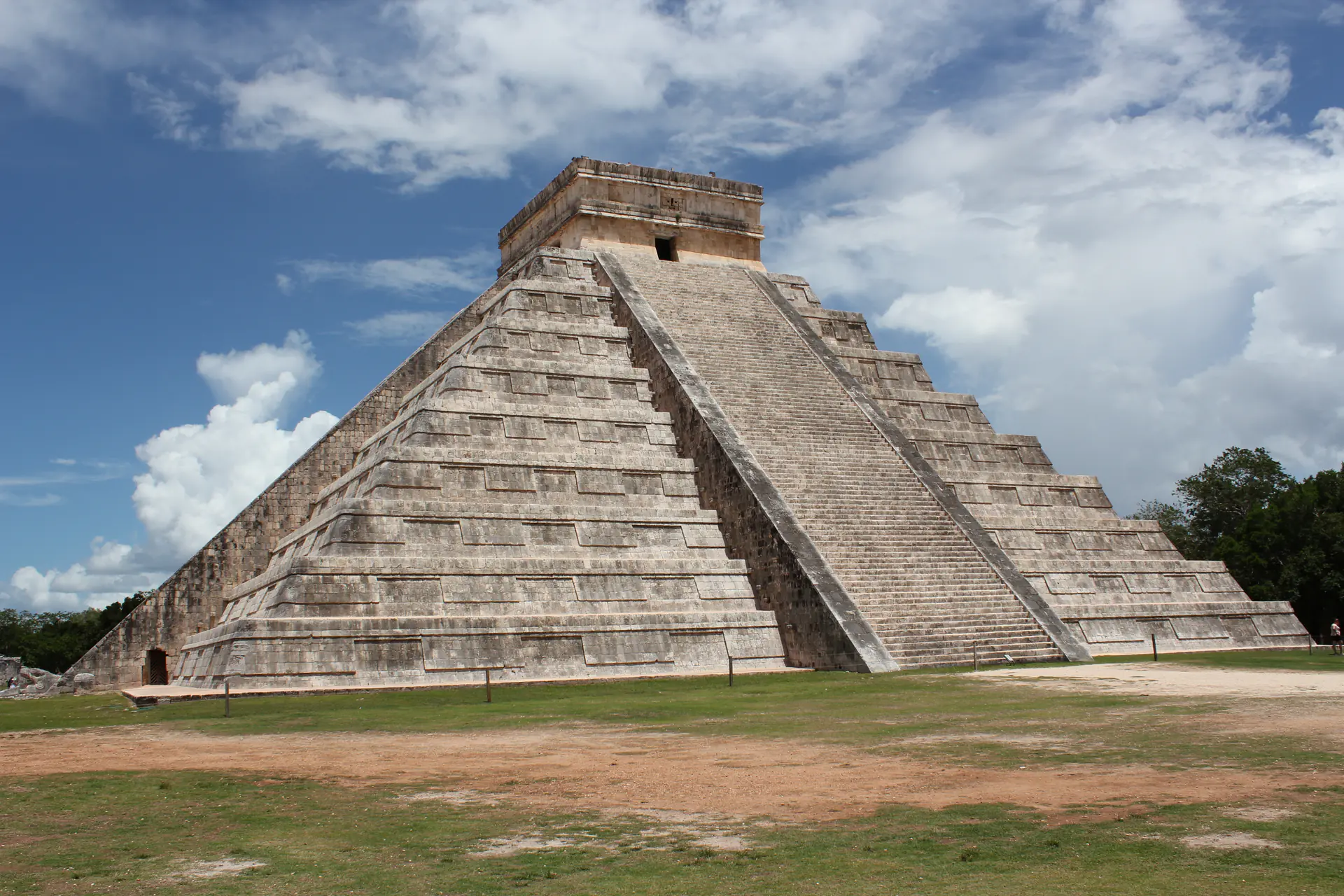
Chichen Itza: Mayan Pyramid & Astronomical Wonders of Yucatán
Ancient Observatory Where Serpent Shadows Mark the Equinox
About This Site
Chichen-Itza represents one of the greatest Mayan cities, showcasing extraordinary architectural achievements through the fusion of Maya and Toltec civilisations during 10th-15th centuries. The iconic Kukulcán Pyramid demonstrates remarkable astronomical precision, with serpent shadows descending the staircase during equinoxes through ingenious geometric design. This UNESCO World Heritage masterpiece preserves the largest Mesoamerican ball court, featuring intricate relief carvings and acoustic marvels that amplify sounds across vast distances. The site's astronomical observatory reveals advanced scientific knowledge through precisely aligned windows tracking celestial movements for agricultural calendars. Monumental structures including the Temple of Warriors and Sacred Cenote demonstrate the civilisation's political power, religious sophistication, and engineering excellence that influenced Yucatán Peninsula architecture for centuries.
Why It Matters
This remarkable archaeological masterpiece demonstrates the pinnacle of Maya-Toltec civilisation through unprecedented architectural innovation, engineering excellence, and astronomical precision. Chichen-Itza reveals extraordinary cultural interchange creating distinctive monumental architecture whilst preserving exceptional testimony to sophisticated scientific knowledge, religious practices, and political power that transformed Mesoamerican civilisations.
Architectural Marvels of the Maya
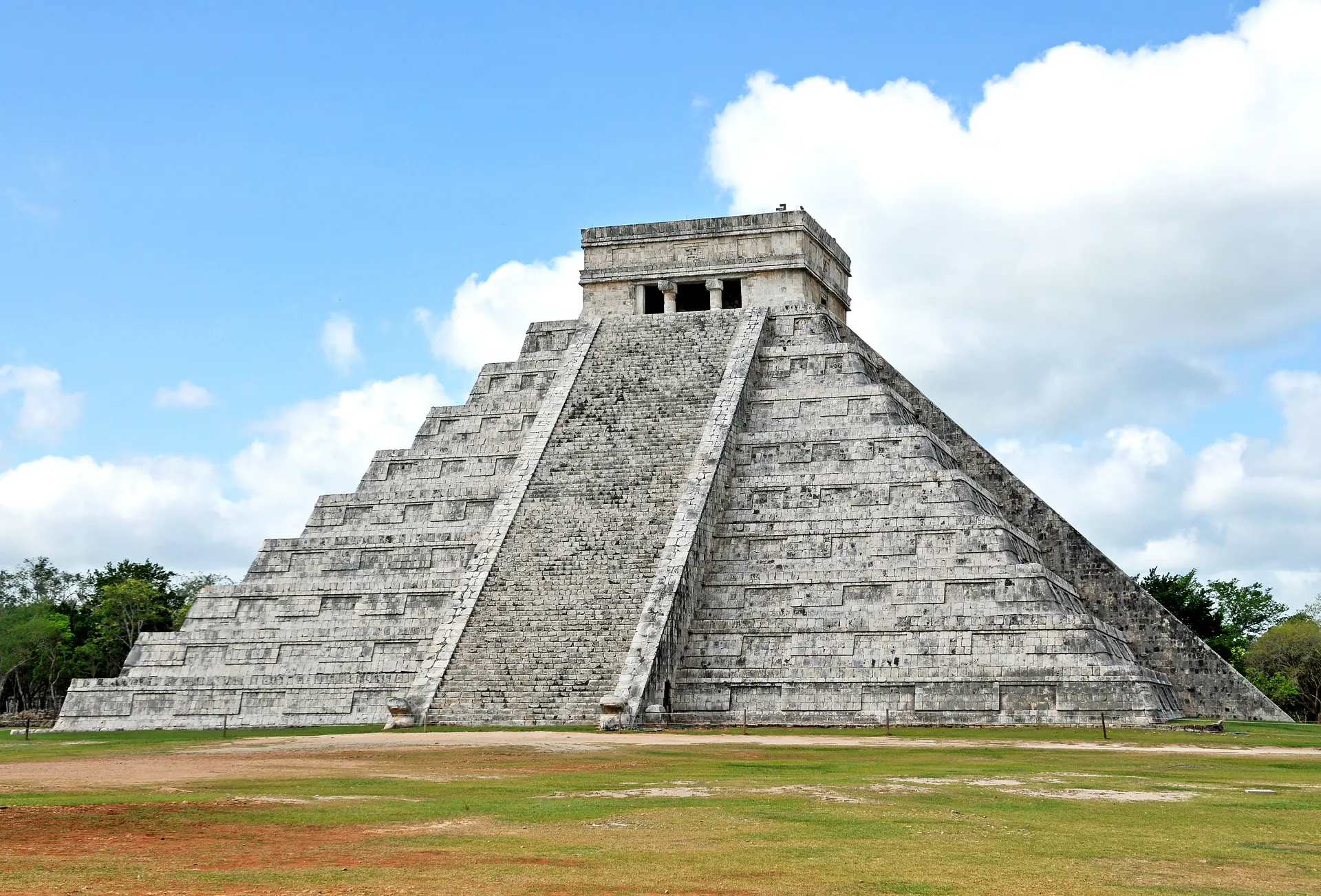
Temple of Kukulcán (El Castillo)
The iconic stepped pyramid rises 30 metres above the plaza, representing the pinnacle of Maya astronomical architecture through ingenious geometric design. Each of the four stairways contains 91 steps which, combined with the temple platform on top, totals 365—corresponding precisely to the solar calendar year. During spring and autumn equinoxes, late afternoon sunlight creates triangular shadows along the northern staircase balustrade, forming an undulating serpent body connecting to carved serpent heads at the pyramid base. This extraordinary phenomenon demonstrates the Maya's sophisticated understanding of solar movements and their ability to encode astronomical knowledge within monumental architecture, creating a structure that functions simultaneously as temple, calendar, and cosmic symbol.
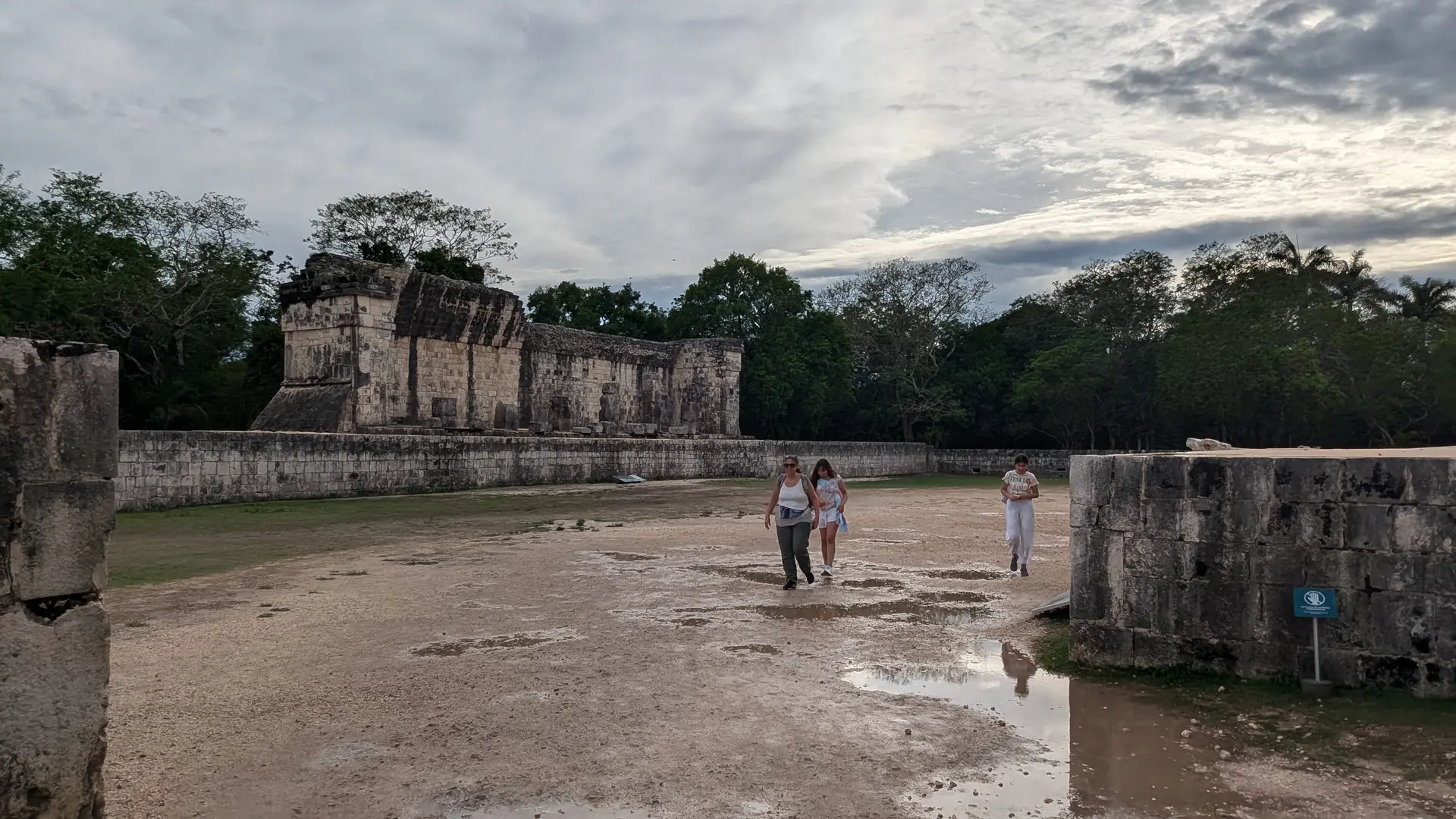
Great Ball Court
The largest Mesoamerican ball court measures 168 by 70 metres, dwarfing all other ancient American playing fields whilst demonstrating exceptional acoustic engineering that allows whispers at one end to be heard 135 metres away at the opposite goal. Massive stone walls rising 8 metres feature intricate relief carvings depicting ball players, death imagery, and ritual decapitation scenes, revealing the game's profound religious significance. Stone rings mounted high on the walls served as scoring targets in this competition where losing teams possibly faced sacrifice. The court's architectural sophistication includes sloped playing surfaces preventing ball stagnation and carved benches for elite spectators, whilst the surrounding structures create natural amplification for thousands witnessing these sacred contests that merged athletic prowess with cosmic symbolism.
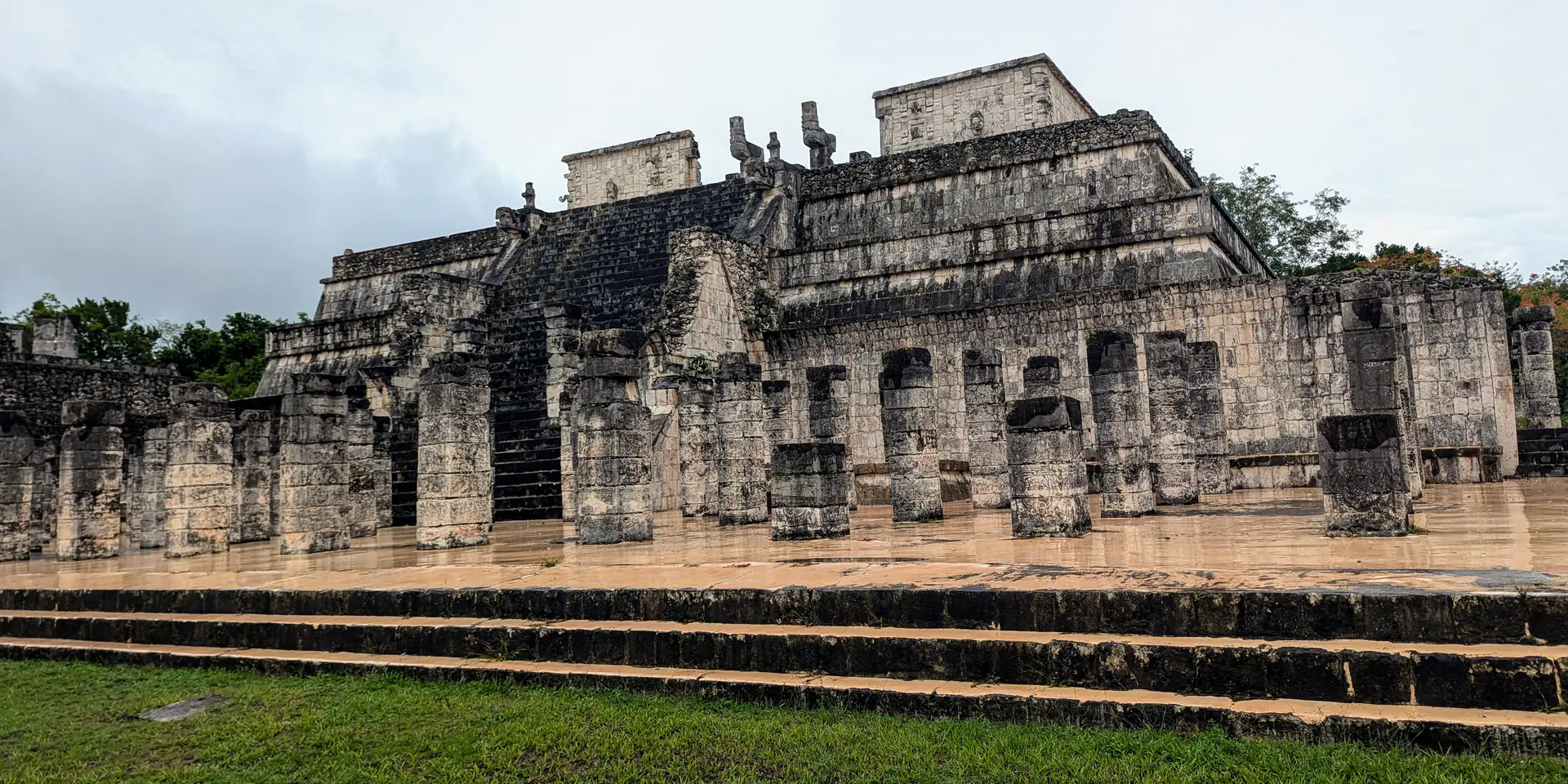
Temple of Warriors
This stepped pyramid complex demonstrates powerful Toltec influence on late Maya architecture through carved warrior columns, feathered serpent balustrades, and Chac Mool sculptures positioned to receive sacrificial offerings. The temple crowns a platform flanked by the Group of a Thousand Columns—actually several hundred pillars that once supported wooden roofs over vast colonnaded halls serving administrative and ceremonial functions. Relief carvings throughout depict jaguars, eagles consuming human hearts, and processions of warriors representing the militaristic society that dominated Chichen-Itza's final centuries. Archaeological excavations revealed an earlier temple buried within the structure, containing well-preserved murals depicting battle scenes and ritual ceremonies that provide invaluable insights into the site's complex construction history and the cultural transformation from Classic Maya to Maya-Toltec synthesis.
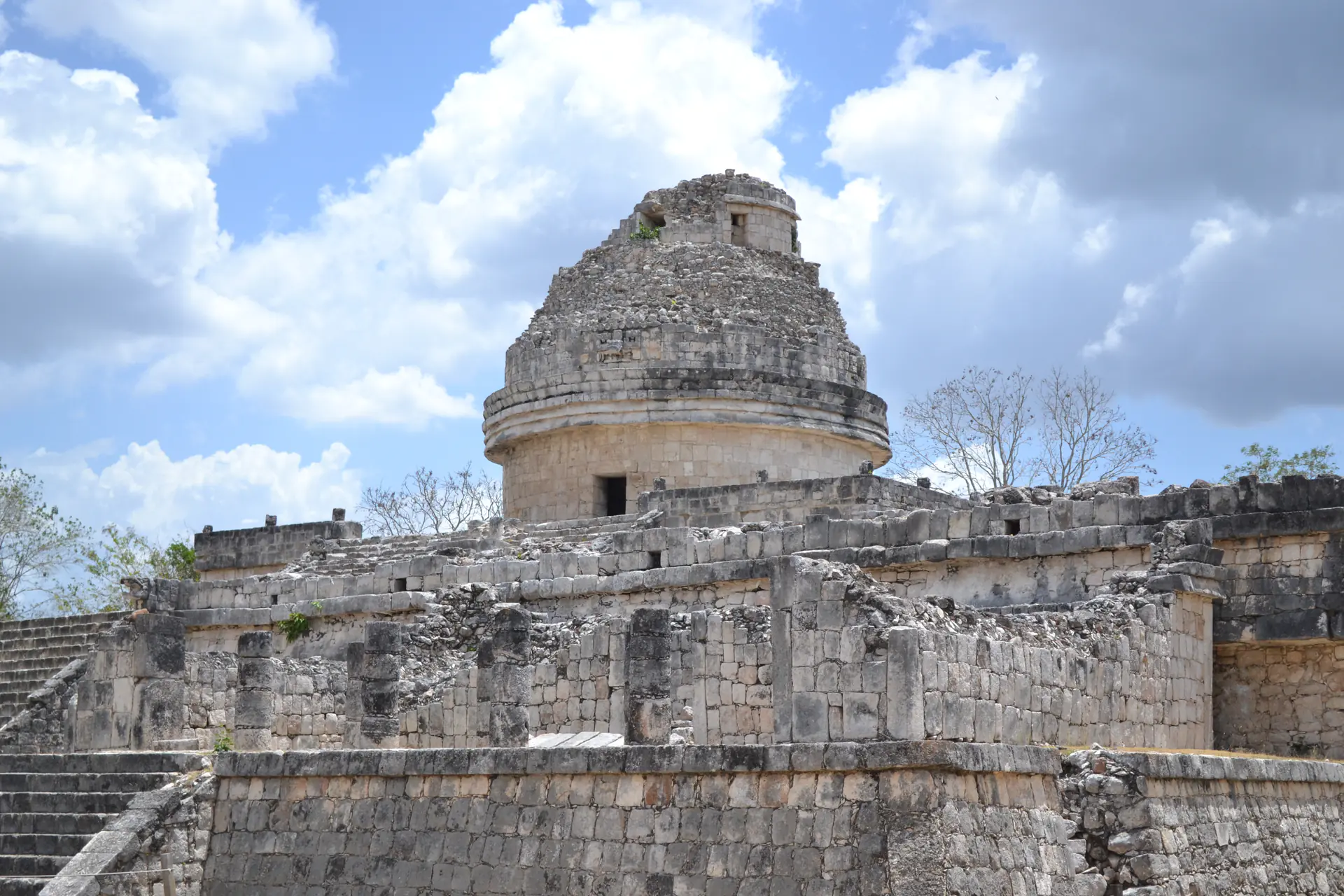
El Caracol (The Observatory)
This cylindrical astronomical observatory reveals the Maya's extraordinary scientific achievements through precisely aligned windows tracking Venus movements, solar equinoxes, and lunar cycles essential for agricultural calendars and ceremonial timing. The building's unusual circular design—unique among rectangular Maya architecture—earned its Spanish name "The Snail" from the interior spiral staircase ascending to upper observation chambers. Window alignments correspond to critical astronomical events including Venus's extreme northern and southern positions, enabling priests to predict planetary appearances for agricultural planning and religious ceremonies. The sophisticated understanding of celestial mechanics demonstrated here rivals contemporary European astronomical knowledge, establishing the Maya as exceptional scientists who encoded cosmic patterns into architectural form. Modern archaeoastronomers continue discovering astronomical alignments, confirming El Caracol functioned as a celestial tracking station.
Location & Planning
Located in Tinúm Municipality, Yucatán, accessible via Cancún (200 kilometres), Mérida (120 kilometres), or organised tours. Mexican pesos (MXN) currency used throughout site and surrounding facilities. Book tickets through official INAH website.
Loading map...
Frequently Asked Questions
Chichen-Itza is a UNESCO World Heritage pre-Hispanic Mayan city in Yucatán, Mexico, famous for Kukulcán Pyramid featuring serpent shadow phenomenon during equinoxes. The site represents exceptional Maya-Toltec architectural fusion with astronomical precision, designated as a New Seven Wonder.
Maya civilisation constructed Chichen-Itza around 600 CE, with major development occurring 10th-12th centuries when Toltec influences from central Mexico merged with Maya traditions. The fusion created distinctive architectural styles combining astronomical knowledge with monumental ceremonial structures that dominated northern Yucatán Peninsula for centuries.
During spring and autumn equinoxes, afternoon sunlight creates triangular shadows descending El Castillo's northern staircase, forming an undulating serpent connecting to carved serpent heads at the pyramid base. This astronomical phenomenon demonstrates extraordinary Mayan engineering precision aligning architecture with solar movements.
Take direct bus from Cancún ADO terminal (2.5-3 hours) or organised tour with transport included. Arrive early morning (08:00 opening) avoiding intense midday heat and tour groups. Book tickets online through official INAH website to skip queues at entrance gates.
November-March offers comfortable temperatures (20-25°C) with minimal rainfall. Spring equinox (20-21 March) attracts massive crowds witnessing serpent shadow phenomenon. Visit early morning for cooler weather, better photography lighting, and fewer tourists before tour buses arrive around 10:00.
All visitors require tickets purchased online through official INAH (National Institute of Anthropology and History) website or at entrance. Mexican pesos accepted; credit cards widely used. Entry includes access to all archaeological structures except climbing pyramids (prohibited since 2006 for preservation).
Bring wide-brimmed hat, high-SPF sun cream, comfortable walking shoes, and reusable water bottle (hydration essential). Lightweight breathable clothing recommended as Yucatán heat and humidity can be intense. Insect repellent helpful for mosquitoes in forested areas around structures.
Chichen-Itza was designated one of the New Seven Wonders of the World in 2007 through global voting campaign recognising exceptional archaeological significance. El Castillo pyramid demonstrates extraordinary astronomical precision through equinox phenomena whilst preserving remarkable Maya-Toltec architectural achievements representing pre-Columbian civilisation zenith.
UNESCO World Heritage Criteria
Inscribed in 1988, this site meets 3 of UNESCO's 10 criteria for Outstanding Universal Value
Criterion (i): Masterpiece of human creative genius
The Kukulcán Pyramid represents a masterpiece of Mayan-Toltec creative genius through its astronomical precision and architectural perfection. The structure demonstrates extraordinary engineering solving complex geometric calculations whilst creating the serpent shadow phenomenon during equinoxes, establishing unprecedented achievements in pre-Columbian architecture.
Criterion (ii): Interchange of human values
Chichen-Itza exhibits exceptional cultural interchange between Mayan civilisation and Toltec traditions from central Mexico. The fusion created distinctive architectural styles combining Maya astronomical knowledge with Toltec military imagery, demonstrating profound cross-cultural influences that transformed Yucatán architecture.
Criterion (iii): Testimony to cultural tradition
The archaeological site provides unique exceptional testimony to the Maya-Toltec civilisation at its zenith during 10th-12th centuries. Monumental structures preserve exceptional evidence of political power, religious practices, and astronomical knowledge through temples, ballcourts, and observatories.
Historical Context
Early Classic Settlement (600-800 CE)
Maya civilisation established Chichen-Itza as regional centre during Classic period, constructing initial ceremonial structures and residential compounds. Early architecture demonstrates pure Maya design principles with characteristic corbelled vaults, elaborate façades, and hieroglyphic inscriptions documenting dynastic histories.
Terminal Classic Florescence (800-1000 CE)
The city experienced dramatic growth becoming major political and economic power in northern Yucatán lowlands. Construction of monumental ceremonial centre including early versions of major structures established Chichen-Itza as dominant regional capital controlling extensive trade networks and tributary relationships with surrounding Maya cities.
Maya-Toltec Synthesis (1000-1200 CE)
Cultural transformation occurred through contact with Toltec traditions from central Mexico, creating distinctive architectural fusion. Construction of El Castillo, Great Ball Court, and Temple of Warriors demonstrates synthesis of Maya astronomical knowledge with Toltec militaristic imagery, establishing unique Maya-Toltec civilisation dominating post-Classic Yucatán.
Political Zenith (1050-1200 CE)
Chichen-Itza reached maximum political power controlling northern Yucatán through military dominance and economic networks extending across Mesoamerica. The city became pilgrimage destination attracting visitors from distant regions seeking sacred cenote ceremonies whilst merchants traded jade, obsidian, gold, and exotic feathers through bustling marketplaces.
Decline and Abandonment (1200-1400 CE)
Political collapse occurred around 1200 CE possibly through internal conflicts, drought, or rival city competition from Mayapán. The population gradually dispersed abandoning monumental centre, though Sacred Cenote continued attracting pilgrims conducting ceremonies into Spanish conquest period despite political authority shifting elsewhere in Yucatán Peninsula.
Spanish Conquest Era (1527-1850s)
Spanish conquistadors arrived 1527 finding Chichen-Itza partially abandoned but Sacred Cenote still receiving pilgrims. Colonial authorities attempted suppressing indigenous ceremonies whilst Spanish chroniclers documented Maya accounts of the city's history. The site remained known to local Maya communities throughout colonial period despite jungle overgrowth obscuring structures.
Archaeological Rediscovery (1843-Present)
American explorer John Lloyd Stephens and British artist Frederick Catherwood published accounts and drawings in 1843 bringing international attention. Mexican government sponsored excavations beginning early 20th century, with Carnegie Institution conducting restoration 1920s-1940s. UNESCO designated World Heritage status 1988, whilst 2007 New Seven Wonders designation brought millions of annual visitors.
Conservation & Protection
Current Conservation Status
Generally well-preserved through ongoing Mexican government conservation programmes, though facing significant pressures from mass tourism, tropical weathering, and structural deterioration requiring continuous monitoring and restoration efforts.
Conservation Challenges
- Managing 2.6 million annual visitors causing accelerated wear on ancient stonework, pathways, and archaeological features through foot traffic and environmental impacts
- Tropical weathering from intense Yucatán rainfall, humidity, and vegetation growth causing limestone erosion, root penetration damage, and biological deterioration of carved surfaces
- Structural instability in several monuments requiring engineering interventions to prevent collapse whilst respecting archaeological integrity and original construction methodologies
- Illegal climbing and touching of structures by tourists despite prohibitions, causing surface damage to carved reliefs, painted murals, and fragile architectural elements
- Urban development pressures from nearby Pisté town expanding towards archaeological zone boundaries threatening buffer zone integrity and aquifer recharge areas
Active Conservation Efforts
- Comprehensive site management plan implemented by INAH (National Institute of Anthropology and History) regulating visitor access, establishing protected zones, and monitoring structural conditions
- Ongoing stabilisation projects addressing structural weaknesses through traditional materials and construction techniques respecting original Maya engineering whilst ensuring long-term preservation
- Visitor management systems limiting daily numbers, establishing designated pathways, and prohibiting pyramid climbing since 2006 to reduce physical damage to archaeological structures
- Advanced documentation using 3D laser scanning, photogrammetry, and digital modelling creating detailed records for conservation planning and virtual reconstruction of deteriorated features
- International collaboration with UNESCO, archaeological institutions, and conservation specialists providing technical expertise, funding support, and best practice guidance for preservation challenges
Image & Content Attribution
Research & Content Sources
Photography & Visual Media
Last updated: 9 October 2025